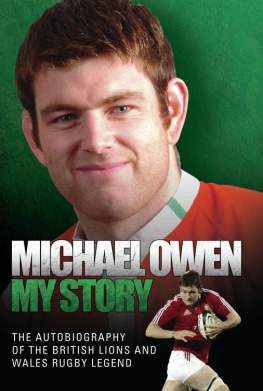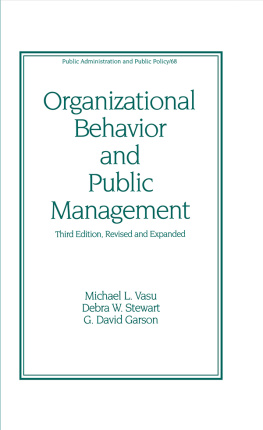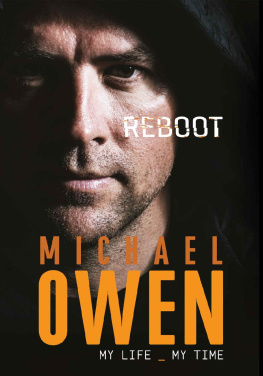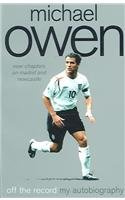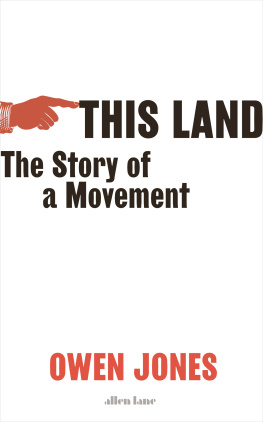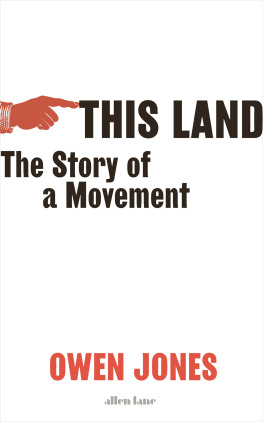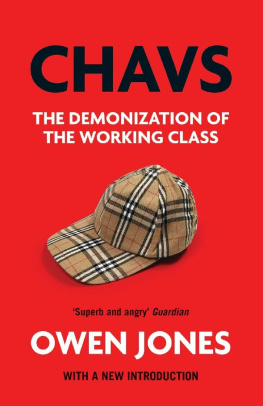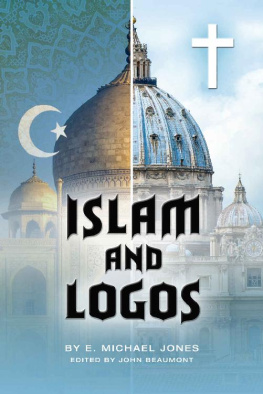STUDYING ORGANIZATIONAL SYMBOLISM: WHAT, HOW, WHY?
MICHAEL OWEN JONES
University of California, Los Angeles
Qualitative Research Methods
Volume 39
Copyright 1996 by Sage Publications, Inc.
All rights reserved. No part of this book may be reproduced or utilized in any form or by any means, electronic or mechanical, including photocopying, recording, or by any information storage and retrieval system, without permission in writing from the publisher.
For information address:
 | SAGE Publications, Inc.
2455 Teller Road
Thousand Oaks, California 91320
E-mail:
6 Bonhill Street
London EC2A 4PU
United Kingdom
SAGE Publications, Inc.
M-32 Market
Greater Kailash I
New Delhi 110 048 India |
Printed in the United States of America
Library of Congress Cataloging-in-Publication Data
Jones, Michael Owen.
Studying organizational symbolism: what, how, why? / author,
Michael Owen Jones.
p. cm.(Qualitative research methods series; v. 39)
Includes bibliographical references.
ISBN 0-7619-0219-8
(acid-free paper).ISBN 0-7619-0220-1 (pbk.: acid-free paper)
1. Organizational behavior. 2. Symbolism in organizations.
I. Title. II. Series.
HD58.7.J623 1996
302.35dc20
95-50213
01 02 03 04 05 10 9 8 7 6 5 4 3 2
Sage Project Editor: Michle Lingre
Sage Copy Editor: Gillian Dickens
CONTENTS
SERIES EDITORS INTRODUCTION
Symbolism is about the production of meaning through the use of symbols. It involves the linking of a sign to a referent by some ordering principle. This process of coding (and decoding) is a mental and therefore a cultural activity. Symbols work to organize experience. In semiotic terms, they are signs that stand for something else. A symbol such as a corporate logo or a well-told joke may stand for a particular company or personal stance. Symbols also may invoke feelings of identification and honor or distance and absurdity. Symbols carry both denotative and connotative meanings. Denotative meanings refer to the direct, more or less instrumental uses of a symbolthe flag as representing a given country, a government building, a state holiday, and so forth. Connotative meanings refer to the expressive, broader uses of a symbolthe flag as standing for law and order, patriotism, national solidarity, and so on. To study symbolism is to learn how the meanings on which people base action are created, communicated, contested, and (occasionally) changed.
In the 39th volume of the Sage Series on Qualitative Research Methods, Michael Owen Jones looks specifically at how to go about locating, examining, and interpreting the symbols to be found within and across organizational settings. Specific techniques for analyzing (in always specified contexts) various symbolic domains of organizational life such as office architecture, workplace jargon, corridor art, and executive suite folktales are put forward systematically and illustrated by reference to numerous exemplary studies. Beyond its solid methodological advice, Studying Organizational Symbolism also offers a delightful look at the emotional landscape of work organizations, because trusted symbols have a power to attract as well as repel. Part inventory, part interpretation, part instruction, and part illustration, the intention of the volume is to encourage, guide, and display the kinds of research understandings made possible by treating symbolism as an elementary social process that makes organizational behavior both possible and meaningful.
John Van Maanen
Peter K. Manning
Marc L. Miller
ACKNOWLEDGMENTS AND DEDICATION
I appreciate John Van Maanens patience. He first asked me to prepare a volume for this series in 1988, pointing out that others do not focus on folklore. After several false starts, I set the work aside. In 1992, he inquired about my progress, noting that although the number of volumes in the series had doubled, there still was no guide to organizational symbolism and its documentation. Three years later, I finally submitted a draft to him.
That I completed this monograph owes much to Mary Jo Hatch, formerly a professor in the Department of Management at San Diego State University and now in the UK at the Cranfield School of Management, Cranfield University. She and I have worked on several projects together, including an essay on photocopier lore and a book in progress on the symbolic world of organizations; the present work uses some of the material I wrote for the first three chapters of that book. She has enlightened me about many facets of organizational theory and methods and has helped me understand the differences between a functionalist analysis (characteristic of most cultural studies and to which I seem to gravitate all too often) and an interpretive approach (which I now think is the essence of symbolic studies). Her insights appear directly at times in this monograph and always indirectly influenced its writing. Any shortcomings, of course, are my own. As the saying goes, You can lead a horse to water....
I am grateful also to many students who, in the past decade, have taken directed studies, fieldwork, and organizational folklore classes from me in which they did research on workplace traditions. Their questions, data, and insights have contributed to this book, helping to structure it and illustrate points. I appreciate too, Jack Santinos permission to quote from his dissertation and the California Folklores Societys permission to quote from Wendy Caesars article in its journal, Western Folklore. Finally, I thank the series editors for their comments regarding which examples to shorten, what terms to define, how to better convey certain points, and so forth. Their suggestions helped considerably in my attempts to bring together from diverse sources a set of ideas about what organizational symbolism is, how it can be documented, and why it should be studied.
I dedicate this volume to the memory of two people who passed away in 1995 while I was writing it. Their work helped shape the two major paradigms informing research on organizational culture and symbolism. Harrison M. Trice published extensively on rites, rituals, and ceremonials as cultural artifacts from a functionalist point of view. Barry A. Turner focused on the stylistic, affective, and aesthetic dimensions of organizational experience, advocating and helping articulate a symbolic interpretivist perspective. Their writings have influenced many, including me; I cite them and quote from them often.
STUDYING ORGANIZATIONAL SYMBOLISM What, How, Why?
MICHAEL OWEN JONES
University of California, Los Angeles
1. WHAT IS ORGANIZATIONAL SYMBOLISM? HOW AND WHY STUDY IT?
Symbols are the most apparent and observable aspects of organizational life; simultaneously, symbolic behavior is the most subtle and elusive. On one hand, businesses, universities, and other organizations proclaim their identity in logos on stationery, newsletters, and even clothing (Dandridge, Mitroff, & Joyce, 1980). Many create slogans to inspire members (Peters & Waterman, 1982), devise rites of passage that mark promotion or retirement (Pondy, Frost, Morgan, & Dandridge, 1983), hold ceremonies to publicly reward employee service (Peters, 1978; Trice, 1993), and make heroes of those who epitomize organizational values (Deal & Kennedy, 1982). Few organization members or researchers fail to notice differences in the size of offices, quality of furnishings, parking assignments, and use of titles (e.g., Kanter, 1977; Morgan, 1986, pp. 176-177). When organizations seek to increase or reduce the effects of hierarchy, they target such emblems of rank (Raspa, 1989, p. 72). All these objects and activities are consciously, even self-consciously, symbolic.





